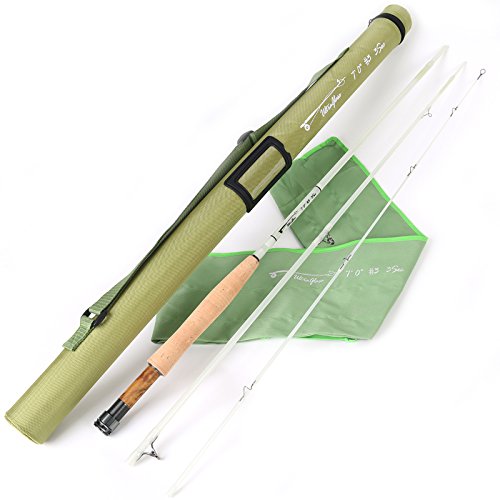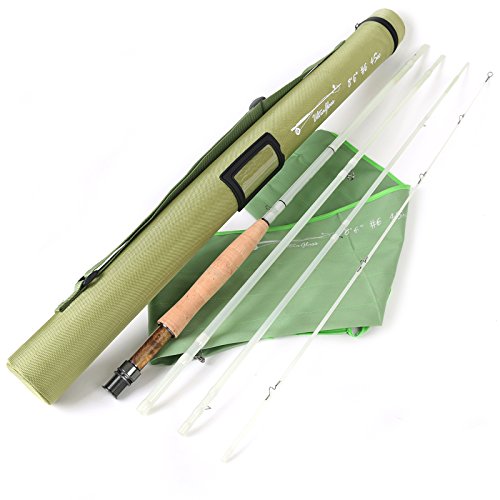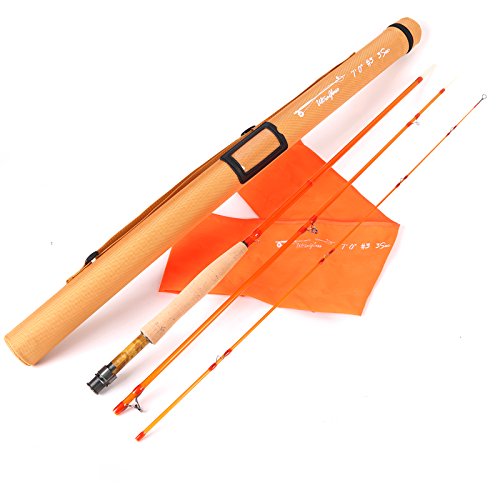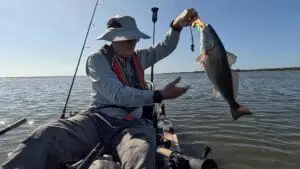Fiberglass vs. Graphite Fly Rods: A Balanced Look at Two Timeless Materials
When it comes to fly fishing gear, few debates stir as much passion as the choice between fiberglass and graphite fly rods. Each material has its loyalists, and for good reason—both offer distinct advantages depending on your fishing style, target species, and environmental conditions. Whether you’re a seasoned angler or just getting started, understanding the pros and cons of each can help you make a more informed decision before buying a fiberglass rod for a few bucks on Craigslist.
🎣 Fiberglass Fly Rods: Nostalgia Meets Durability
Pros:
- Flex and Feel: Fiberglass rods are known for their deep flex and smooth casting action. They load easily and offer a slower tempo, which is ideal for short casts and delicate presentations—especially useful in small streams or tight quarters.
- Durability: These rods are incredibly tough. Fiberglass can withstand abuse that would shatter graphite, making it an excellent choice for beginners, backpackers, or anyone fishing in rugged terrain.
- Forgiveness: The slower action and softer tip reduce the chance of snapping tippets or pulling flies out of a fish’s mouth. This makes fiberglass ideal for dry fly fishing and targeting smaller, more sensitive species, such as brook trout.
Cons:
- Weight: Fiberglass rods tend to be heavier than graphite, which can lead to fatigue during long days on the water or when casting repeatedly over distance.
- Limited Distance: Their slower action and deep flex make them less suitable for long casts or windy conditions. If you’re fishing big water or need to punch through gusts, fiberglass may fall short.
- Less Sensitivity: While they offer great feel during the cast, fiberglass rods can be less sensitive when detecting subtle strikes or bottom contact during nymphing.
⚡ Graphite Fly Rods: Precision and Power
Pros:
- Lightweight Performance: Graphite rods are significantly lighter than fiberglass, which improves casting stamina and reduces arm strain—essential for saltwater or all-day river sessions.
- Fast Action: These rods load quickly and recover fast, allowing for tight loops and long-distance casts. They’re ideal for fishing in windy conditions, covering large areas, or targeting species that require quick and accurate presentations.
- Sensitivity: Graphite transmits vibrations well, making it easier to detect subtle takes and bottom structure. This is a major advantage for nymphing or streamer fishing.
Cons:
- Fragility: Graphite rods are more brittle and prone to breakage under stress or impact. A dropped rod or a high-stick under load can lead to a costly snap.
- Less Forgiving: The fast action and stiffness can be unforgiving for beginners. Mistimed casts or aggressive hooksets may result in broken tippets or missed strikes.
- Price Range: While graphite rods are available at all price points today, high-performance models can be expensive. Budget graphite rods may lack the refinement of their premium counterparts.
🧭 Choosing What’s Right for You
The ideal rod material depends on your fishing environment and personal style. If you’re casting dry flies to native trout in Appalachian headwaters, a 3-weight fiberglass rod might feel like magic. But if you’re stalking redfish in windy coastal flats or swinging streamers for steelhead, a fast-action graphite rod will give you the edge.
Many anglers keep both in their arsenal, switching based on conditions and mood. Fiberglass offers a soulful, tactile experience that connects you to the rhythm of the water. Graphite delivers precision and efficiency, especially when conditions demand it.
Ultimately, the best rod is the one that makes you want to fish more. Whether you’re chasing nostalgia or performance, both materials have earned their place in fly fishing history—and in your hands.
Basic content generated by AI, edited by Steve




